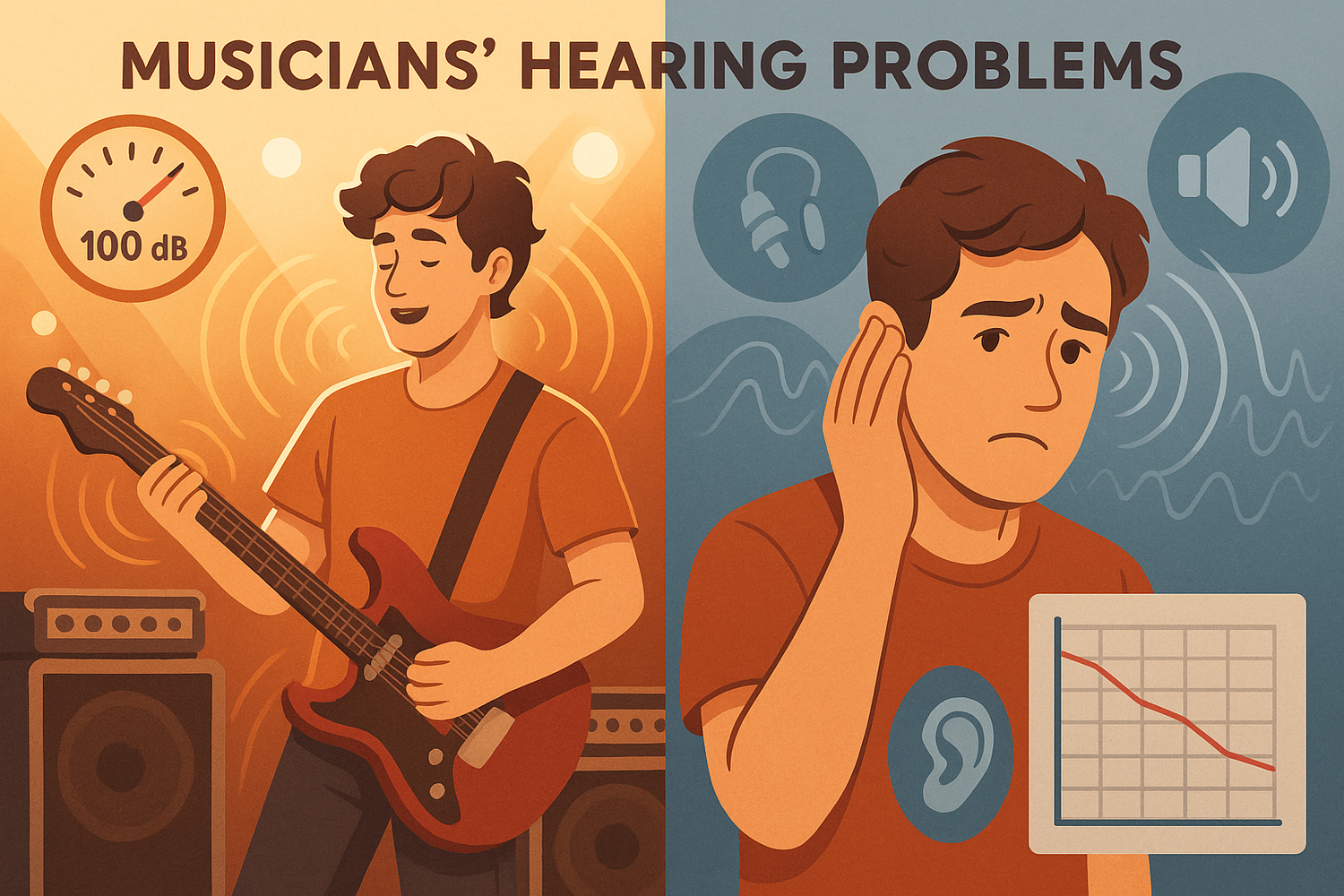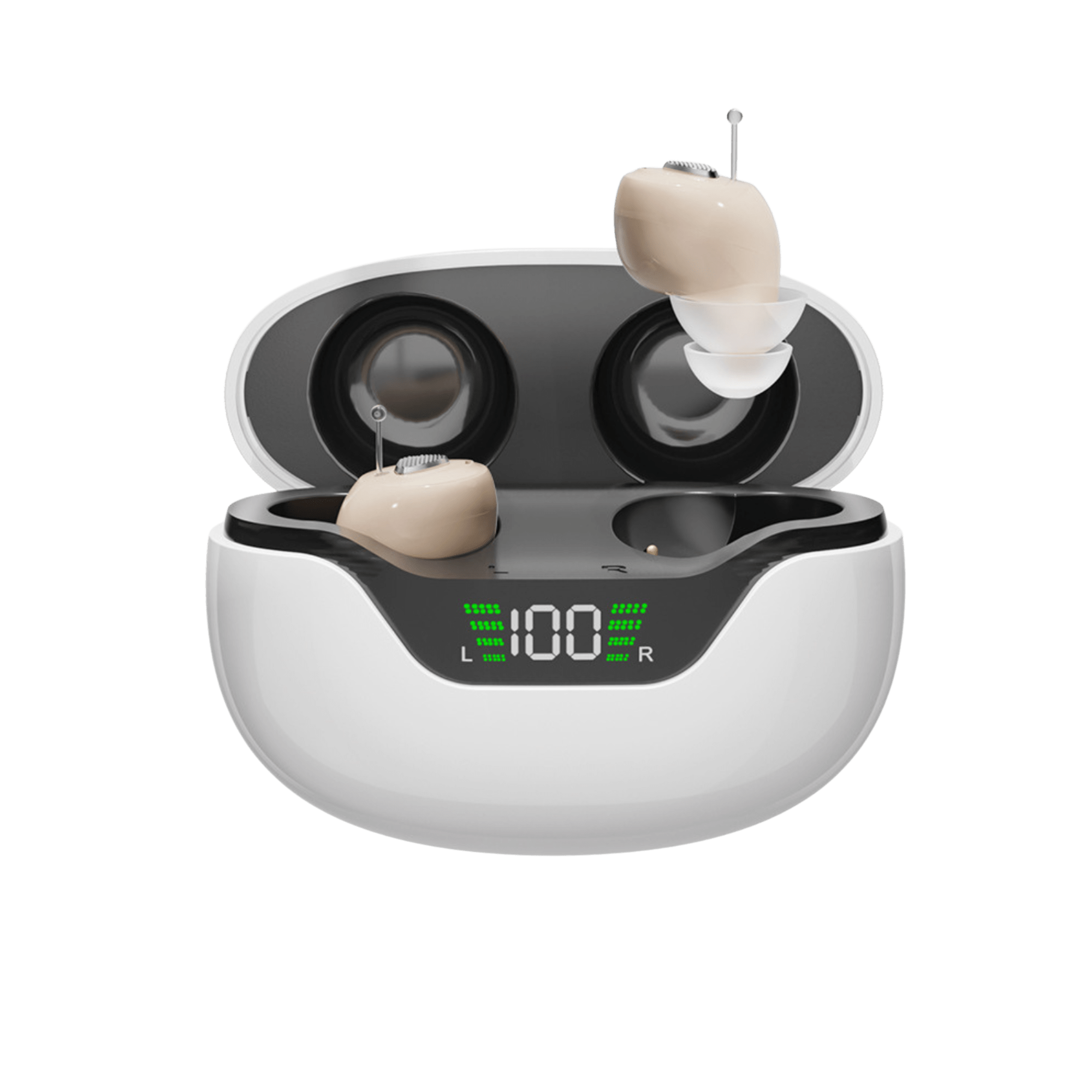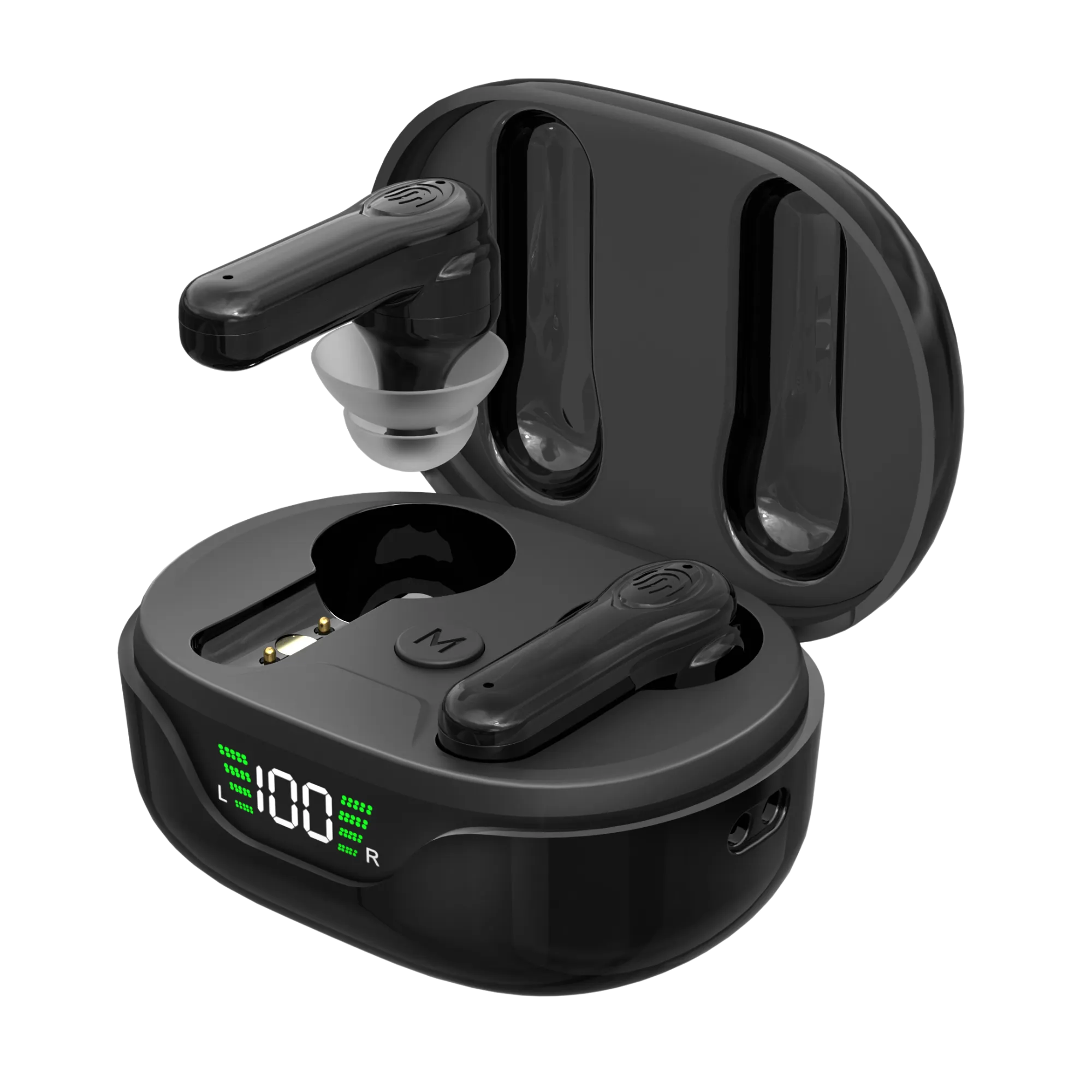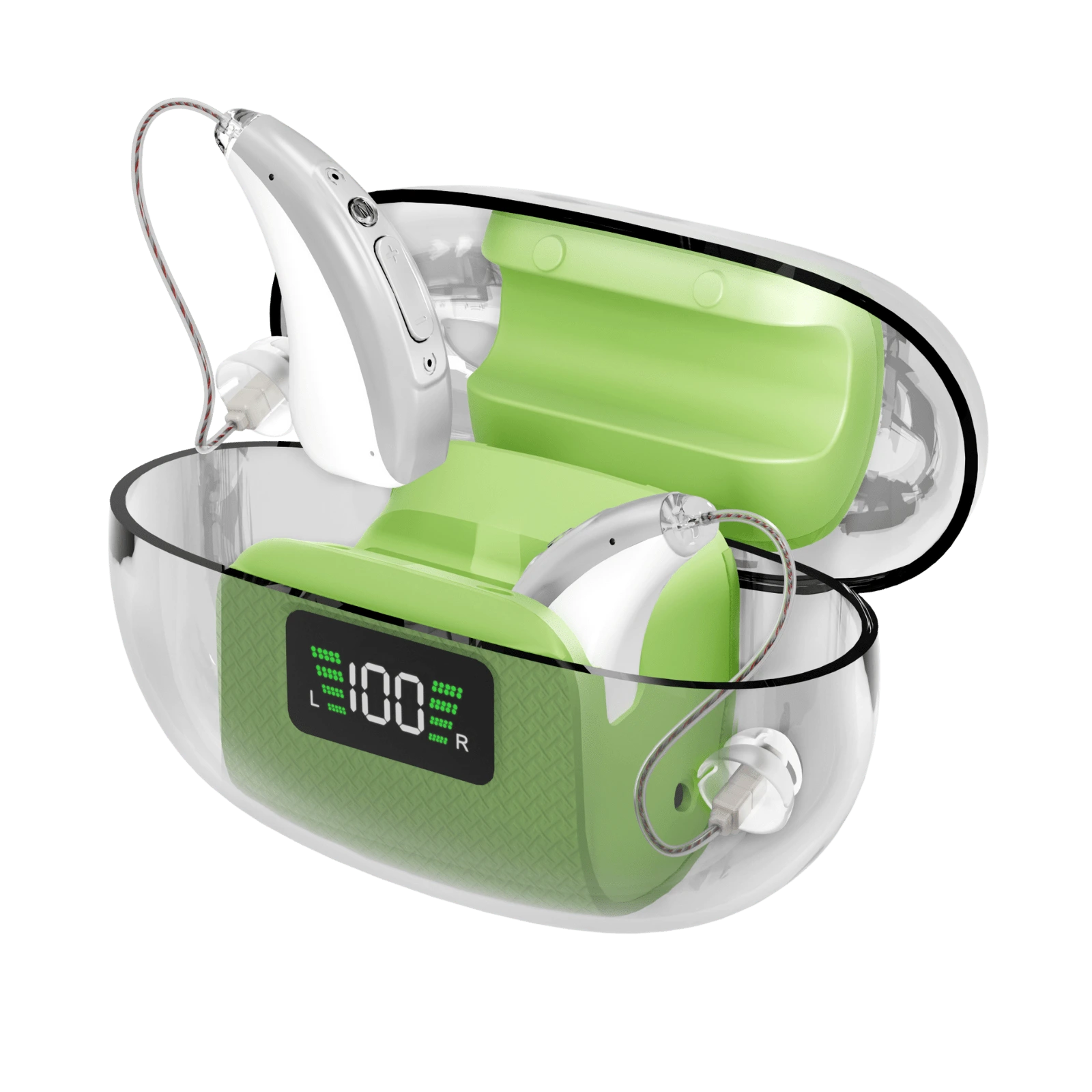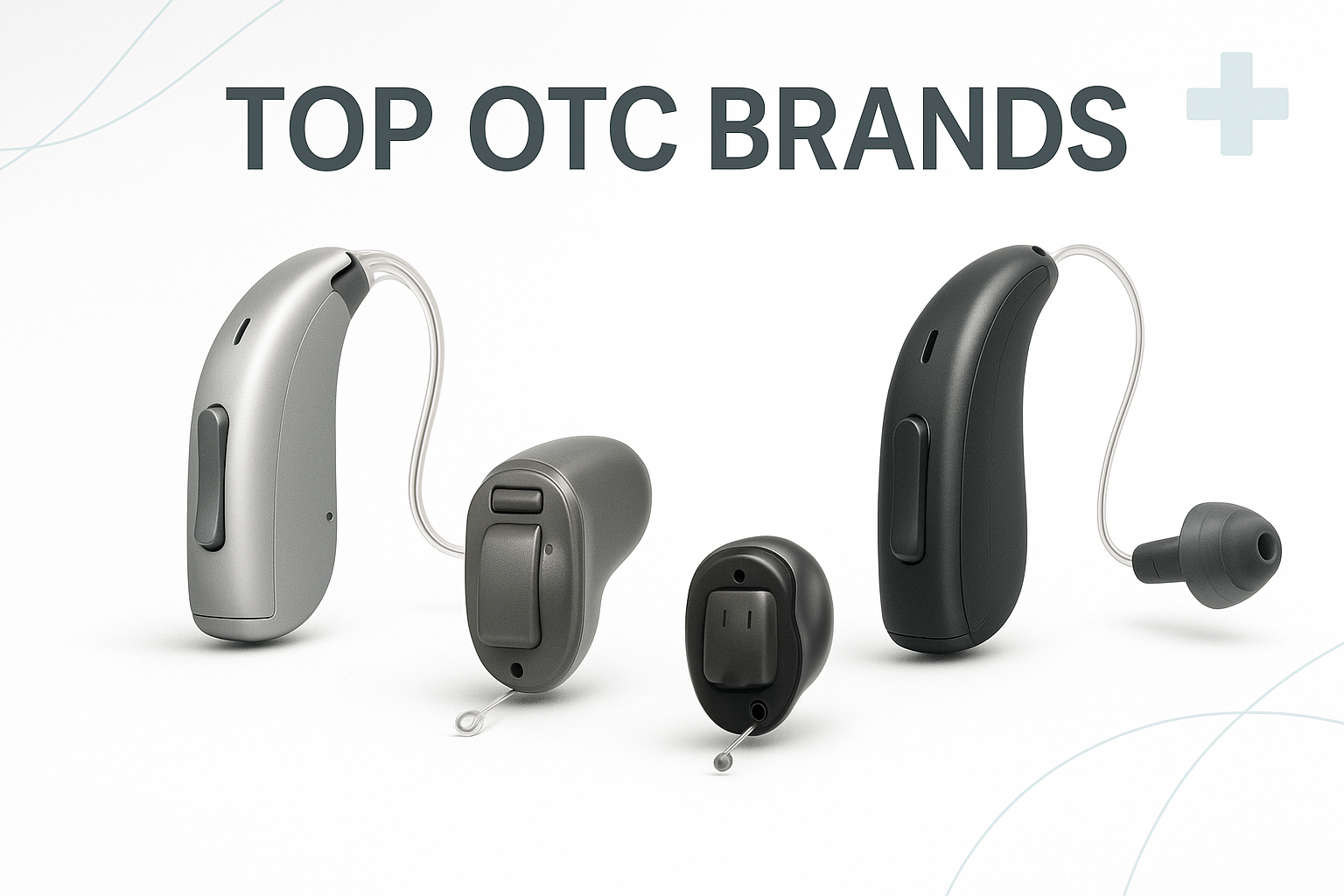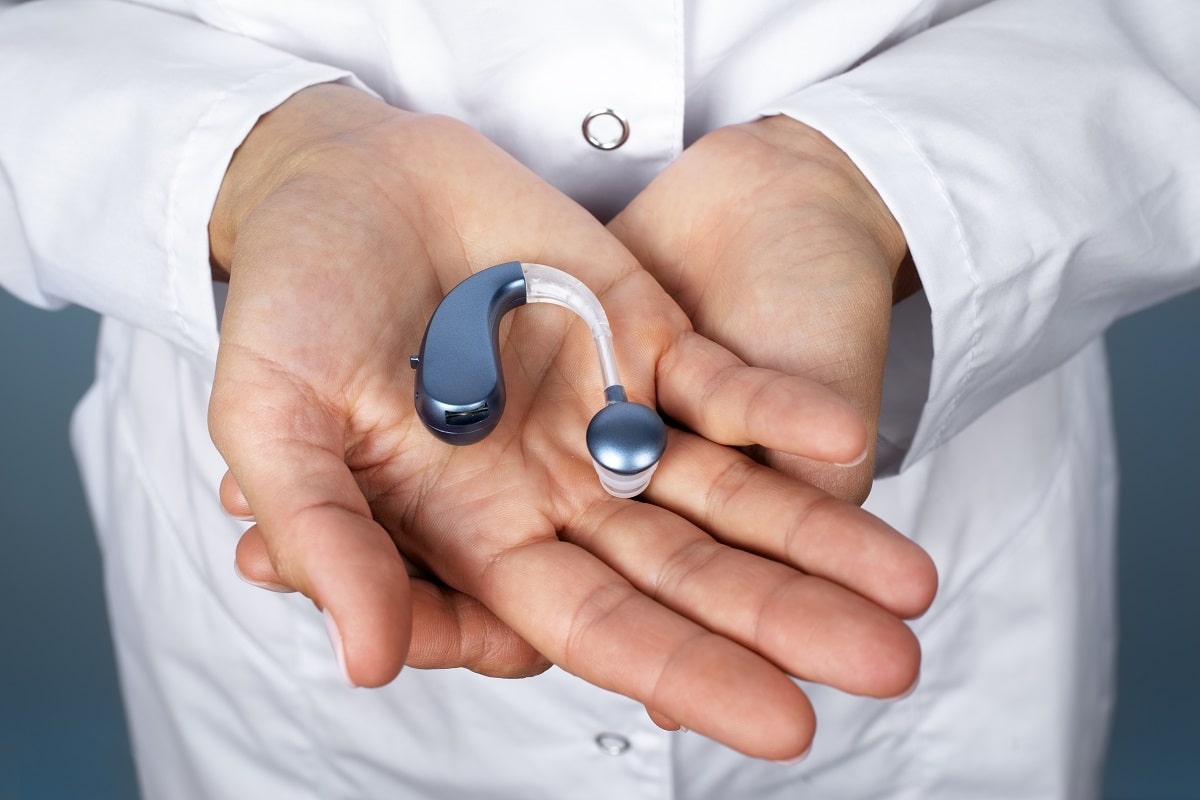Prevalence & Types of Hearing Damage
A 2025 scoping review found that rock, pop, and jazz musicians face a significantly higher risk of hearing loss (>20 dB threshold shift) in frequencies between 3,000-8,000 Hz, while classical musicians more often suffer loss in the 4,000-6,000 Hz range (PubMed, 2025).
In one systematic review of over 4,600 professional musicians, about 38.6% had some degree of hearing loss. Prevalence was higher for pop/rock musicians (≈63.5%) than for classical musicians (≈32.8%) (MDPI, 2024).
Tinnitus is also common: roughly 26.3% of professional musicians report tinnitus alongside hearing loss (Nature, 2024).
Other reported symptoms include:
-
Hyperacusis (oversensitivity to sound)
-
Diplacusis (pitch discrepancy between ears)
-
Hearing notches (sharp drops in sensitivity at specific frequencies) (MDPI, 2024).
How These Problems Affect Musicians' Practical Performance
Pitch, Timbre & Harmonics
Damage in higher frequencies (3-8 kHz) reduces perception of overtones. Instruments such as violins, cymbals, brass, and vocals lose clarity. Musicians describe "muddy" sound, difficulty tuning, and poor ensemble blending.
Reduced Dynamic Range
Quiet passages disappear, while loud passages become distorted or painful. This compresses the musician's auditory window, causing fatigue and strain when compensating (e.g., leaning forward, increasing monitor volume).
Localization & Spatial Awareness
Hearing loss and asymmetry between ears reduce the ability to locate sound sources. This disrupts ensemble timing, on-stage interaction, and studio mixing.
Tinnitus, Hyperacusis & Mental Load
Persistent ringing, sound sensitivity, or distortion increases mental strain. Musicians report reduced concentration, performance anxiety, and faster fatigue. Tinnitus severity correlates more strongly with lifetime sound exposure than with current thresholds (Lippincott Journals, 2024).
Barriers to Using Hearing Aids for Music
Standard hearing aids are optimized for speech, not music. Musicians report challenges such as:
-
Music programs that fail to preserve dynamics
-
Compression settings that flatten sound
-
Delay/latency issues
-
Feedback with acoustic or amplified instruments
-
Difficulty integrating devices into stage monitors or rigs (Thieme, 2024).
What Hearing Aids Need to Solve These Problems
| Requirement | Why It Matters | Trade-Offs / Considerations |
|---|---|---|
| Extended frequency range (~8 kHz) | Preserves high harmonics vital for timbre (PubMed Central, 2025) | Higher gain risks feedback; ear coupling must be precise |
| Very low distortion (THD <0.5%) | Musicians detect even small distortions | Higher fidelity parts increase cost/power use |
| Flexible compression (fast/slow attack & release) | Research shows fast compression aids instrument separation; slow compression improves subjective quality (Computational Audiology, 2024) | Over-compression flattens dynamics; attack/release trade-offs exist |
| Multiple programs / snapshots | Different venues require different settings | Too many modes confuse; may impact latency/battery |
| Low latency | Streaming/monitoring requires <20 ms delay | Bluetooth and processing can introduce lag |
| Directional microphones / binaural processing | Improves localization and stage awareness | May reduce natural ambience; higher power consumption |
| Feedback suppression / high SPL control | Handles sudden peaks (amps, drums, cymbals) | Aggressive suppression may degrade sound |
| Tinnitus support | Masking relieves concentration strain | Must avoid interfering with music perception |
Evidence From Studies
-
A 2025 study on recorded music found fast compression improved musical scene analysis (ability to separate instruments), while slow compression was preferred for overall sound quality (SAGE Journals, 2025).
-
Qualitative research shows musicians using dedicated Music Programs report reduced fatigue, better conductor following, but sometimes note distortion in loud parts or flat dynamics (Thieme, 2024).
-
Tinnitus severity is often linked more to lifetime exposure than to current hearing thresholds, meaning even musicians with "normal" audiograms remain at risk (Lippincott Journals, 2024).
Practical Solutions & Strategies for Musicians
Early Screening & Monitoring
-
Regular audiograms at 3,000-8,000 Hz, including inter-octaves (e.g., 6,000 Hz).
-
Track tinnitus/hyperacusis symptoms early-don't wait until performance suffers.
Proper Ear Protection
-
Use custom musician's earplugs that attenuate evenly across frequencies.
-
Take listening breaks to limit cumulative exposure.
Choosing a Hearing Aid & Setup
-
Ensure support for a music-optimized program with adjustable compression and low distortion.
-
Work with audiologists experienced in musician fittings.
Adaptive Usage
-
Use directional mics for live stage noise reduction.
-
Pair hearing aids with in-ear monitors or remote mics for studio clarity.
-
Adjust compression depending on genre and environment.
Maintenance & Training
-
Clean mics and ear tips regularly.
-
Use ear training exercises to retrain perception of harmonics.
-
Schedule listening/rest intervals to reduce fatigue.
How Panda Hearing Aids Map to Musicians' Needs
Panda models integrate many research-backed features at a fraction of clinic prices:
1. Panda Advanced III - $299
-
DSP with WDRC (wide dynamic range compression) & adaptive feedback cancellation.
-
Frequency range: 209-6100 Hz (solid mid-to-high clarity).
-
Battery: 20 hrs per charge + 60 hrs backup.
-
Best for home producers, vocalists, and instrumentalists seeking affordability.
2. Panda Quantum - $499
-
Extended range (200-8000 Hz) captures high harmonics.
-
Built-in self-hearing test with auto-adjustment (no audiologist needed).
-
Bluetooth 5.0 streaming, 24 hrs use, 96 hrs with case.
-
Best for musicians needing personalized tuning & DAW integration.
3. Panda Elite - $899
-
Directional microphones + binaural sync for 360° awareness.
-
Four listening modes (Normal, Restaurant, Outdoor, Music).
-
THD as low as 0.2-0.3%.
-
App control for quick switching.
-
Best for touring musicians & ensembles.
4. Panda Supreme - $1,099
-
Three-microphone array with adaptive noise control.
-
Battery: Up to 26 hrs (Bluetooth off).
-
Tinnitus masking programs included.
-
Full stereo streaming via Bluetooth 5.0.
-
Best for musicians managing tinnitus & long rehearsals.
Conclusion: Preserving Hearing, Preserving Artistry
Nearly half of professional musicians experience hearing problems during their careers. Subtle pitch issues, tinnitus after gigs, or difficulty hearing colleagues can all affect performance and career longevity.
The good news: modern hearing aids designed with music in mind can protect hearing while restoring clarity, nuance, and creativity.
Panda Hearing Aids combine extended frequency response, low distortion, Bluetooth streaming, and tinnitus support-at up to 80% lower cost than clinic devices. Whether you're a violinist struggling with harmonics, a guitarist battling tinnitus, or a producer chasing precision, Panda offers practical, research-backed solutions.
🎸 Visit PandaHearing.com to explore the Advanced III, Quantum, Elite, and Supreme models. Protect your ears. Preserve your sound. Keep making music.
